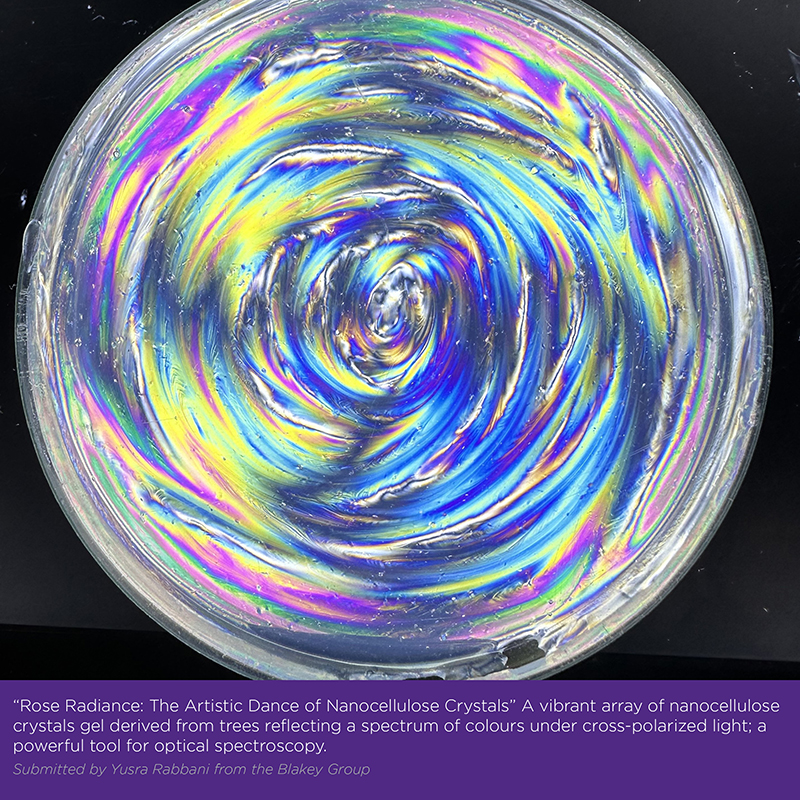The votes are in, and a tiny brain in a dish has trumped digital cholesterol and a jar of goo.
This stunning brain organoid - captured by Wolvetang Group PhD scholar Sean Morrison - has been named the most impressive specimen in this year’s AIBN image contest.
 Our judges chose Sean’s image from 13 excellent finalists, a list that had already been painstakingly whittled down from 55 entries.
Our judges chose Sean’s image from 13 excellent finalists, a list that had already been painstakingly whittled down from 55 entries.
Sean has been a regular finalist in the image contest during his time at the AIBN and is renowned for his ability to capture organoids at close quarter.
He says his winning brain organoid – with its neurofilament labelled white and doublecortin as orange – is just one of many synthetic creations grown from stem cells in the Wolvetang labs.
“But I suppose unlike a lot of other specimens, this one does really resemble a brain – there’s a lot of challenges to overcome in vitro so it’s not really something that you have a lot of control over,” he says.
“Essentially, we grow these little brain organoids in three dimensions so they're in suspension culture. Very early on, they start to develop different regions and complexity of the of the brain itself.
“I can then take that tissue and essentially paint it with antibody markers that are fluorescently labelled.”
Sean says he captured this organoid with a Zeiss LSM900 Fast AiryScan2 Confocal over at the Microscopy and Image Analysis Facility situated in UQ’s School of Biomedical Sciences.
Remarkably, two of Sean’s organoid images were named as finalists in 2024, the second being a lovely leukodystrophy spinal cord organoid.
Telling a story through molecular dynamics
Narrowly missing out on top spot was this magnificent computational creation from O’Mara Group scholar Ada Quinn.

Using 3D rendering software (and applying immense patience) Ada was able to visualise months of scientific data into something that not only looks great, but tells a cool story.
Her second-place winning molecular dynamics simulation shows a cholesterol molecule binding to the human glycine transporter 2 inside a messy mixture of flexible phospholipids, and more rigid sterols.
“This is a protein in the spinal column that is really important for controlling the perception of pain,” Ada says.
“It's how the spine tells the difference between signals of normal touch and signals that are actually meant to be painful. It starts to malfunction in a lot of chronic pain conditions, and shuts down normal, healthy pain signals.
“And so what we're looking at is ways to manipulate that protein to either restore its function when it's broken, or tell it be a bit be a bit more aggressive with silencing pain signals to make new painkillers.”
Ada says these kind of visualizations are a lot like any other creative process, and involve a lot of time testing and drafting images to give a true representation of the work that can be easily understood.
“In this case, I'm trying to communicate something that's really rich and noisy, so I need to communicate that noise and that chaos, but in a way where the thing I'm actually trying to show doesn't get lost.
“There's a lot of choosing camera angles, choosing focal lengths, a lot of it's like setting up a photo shoot.”
Somewhere over the (crystal hydrogel) rainbow
Meanwhile, the public made their preference clear in the People’s Choice prize by selecting Yusra Rabbani’s dish of nanocellulose crystals.

People’s choice was decided by tallying up two weeks’ worth of interactions in the Image Comp gallery on the AIBN’s Facebook page.
PhD student Yusra took the lead early on and showed no sign of relinquishing her grip on the prize.
Resembling a plate of clear goo to the naked eye, Yusra was able to give this nanocellulose crystal hydrogel a rainbow effect under cross-polarized light, a powerful tool for optical spectroscopy.
“In the lab we’ve got a black box, a polarised light shining through from underneath, and then we’ve got a polarised film on top. It's like two polarised films with the sample in the middle,” she said.
“If you look at it's just a translucent gel, but it is made up of nanocrystals that hold their place until you mix them up again. When it’s under cross polarised light, based on the orientation, each crystal reflects a different colour, so you get all these colours.”
“And then you just take a picture.”
Yusra is using the nanocellulose hydrogel for wound monitoring sensors.
Thanks to all who entered this year’s AIBN image contest, and a special congratulations to our other finalists Syed Aoun Ali, Gary Cowin, Ekaterina Strounina, Rujing (Sophie) Xin, Desi Veleva, Biao Wang, Yutong Zhu, Asep Nugraha, and Marco Enriquez.
You can see all our shortlisted entries over at the AIBN Facebook page.



